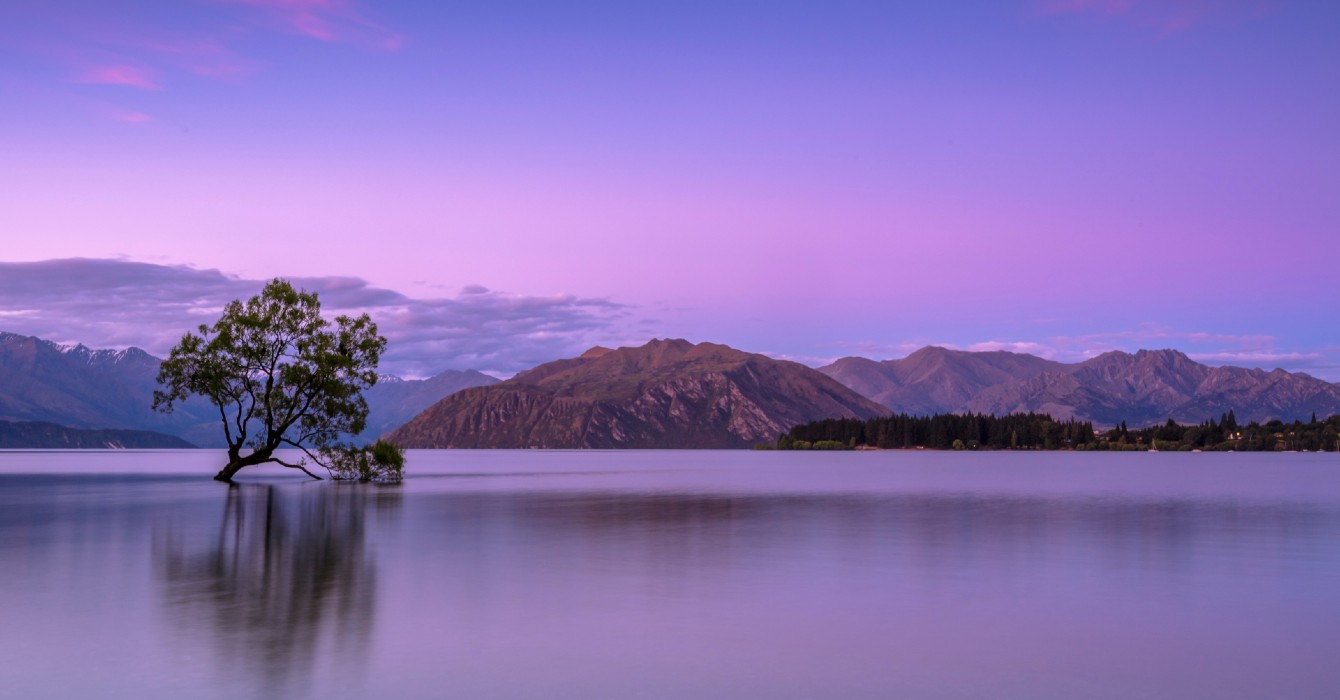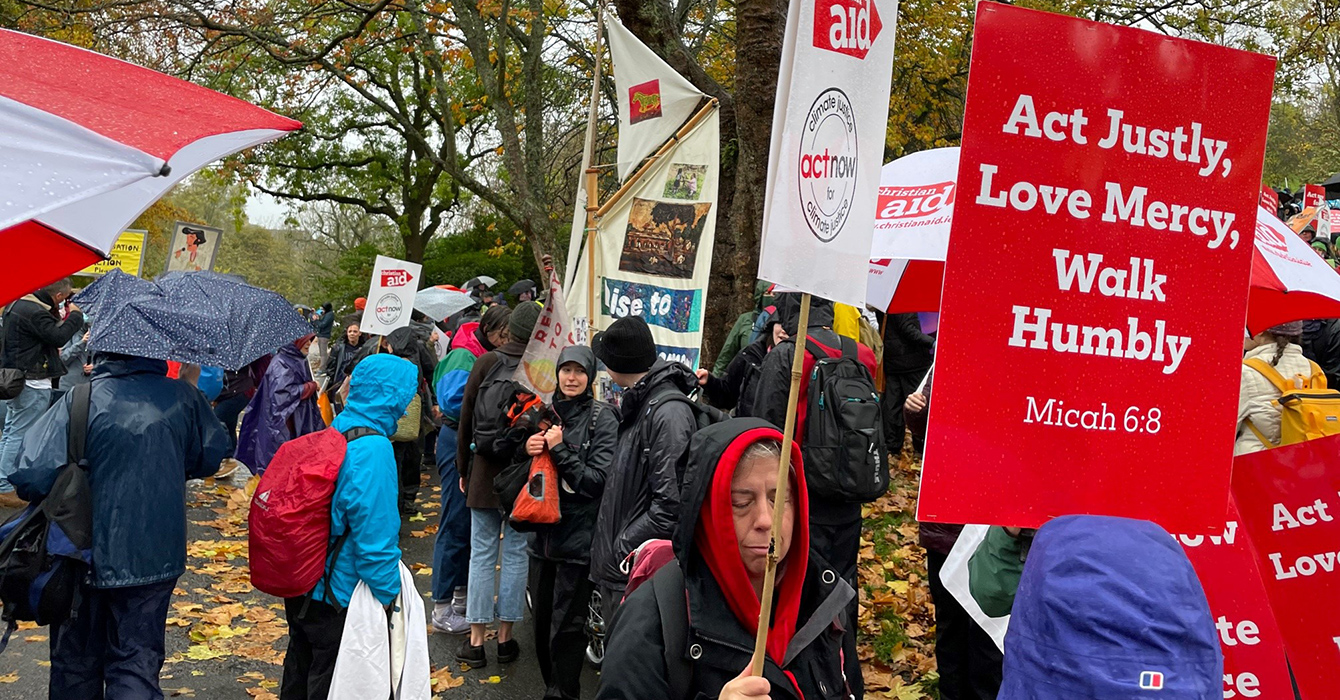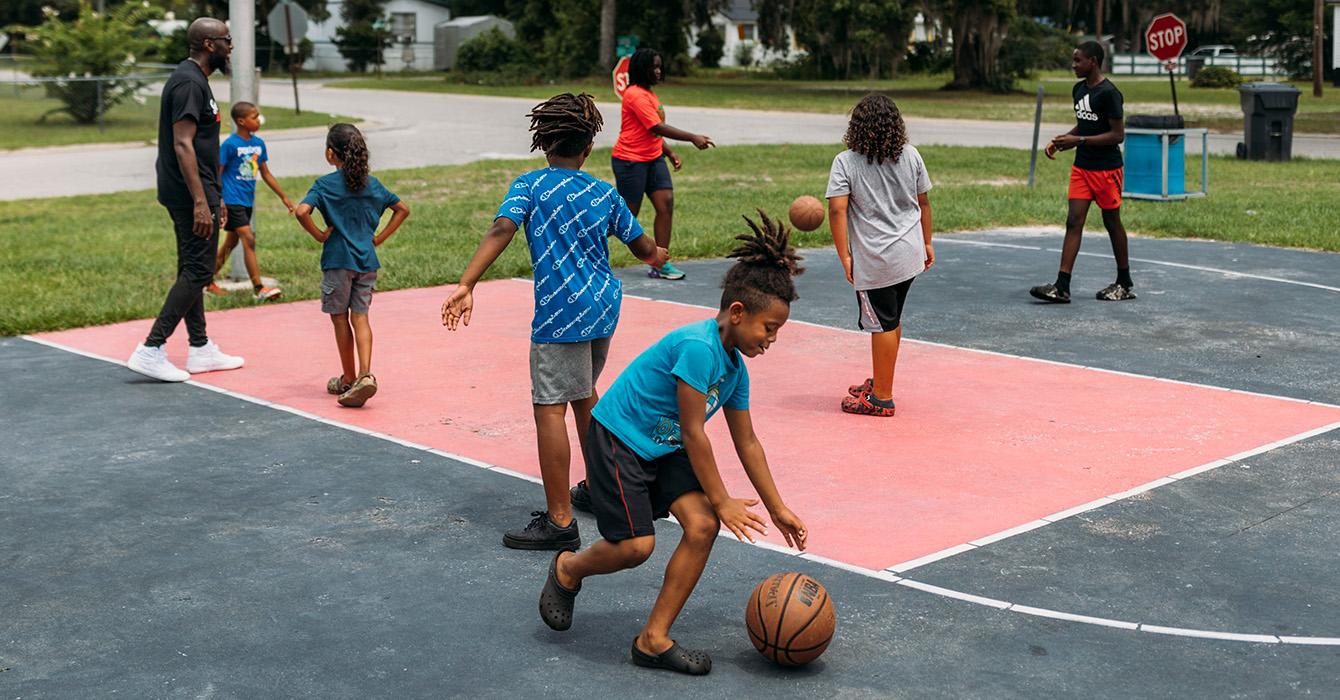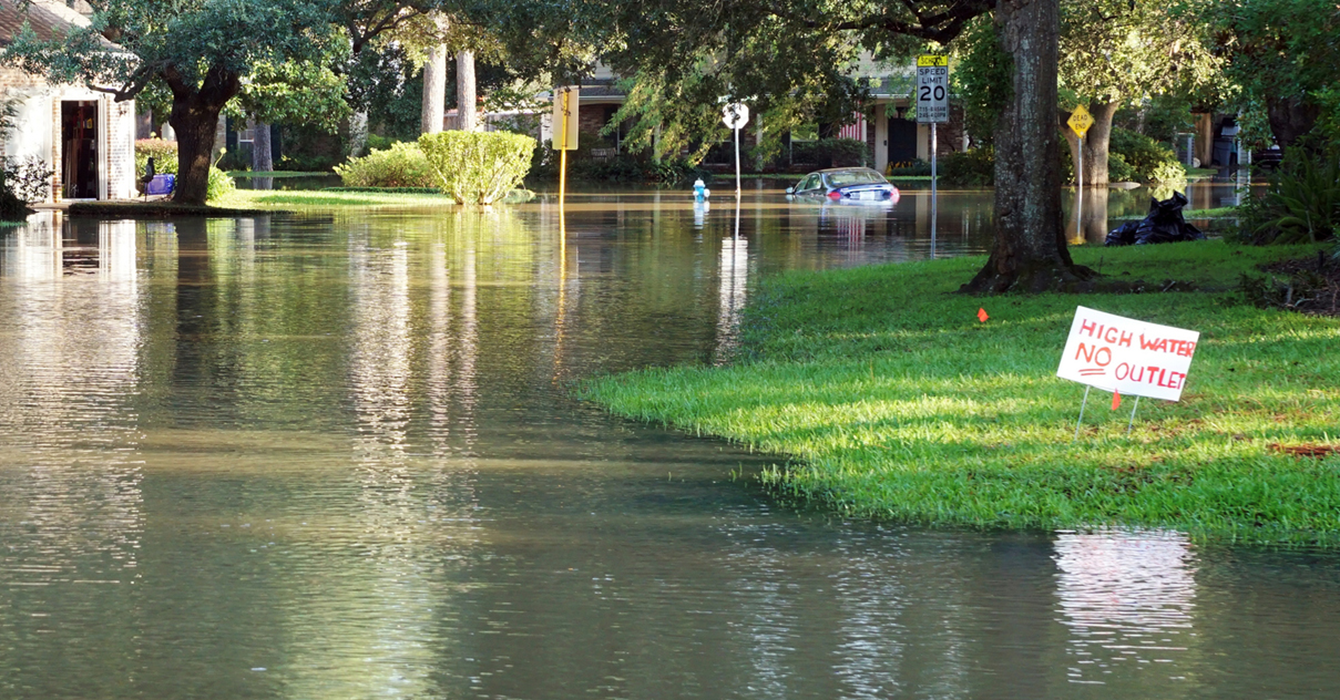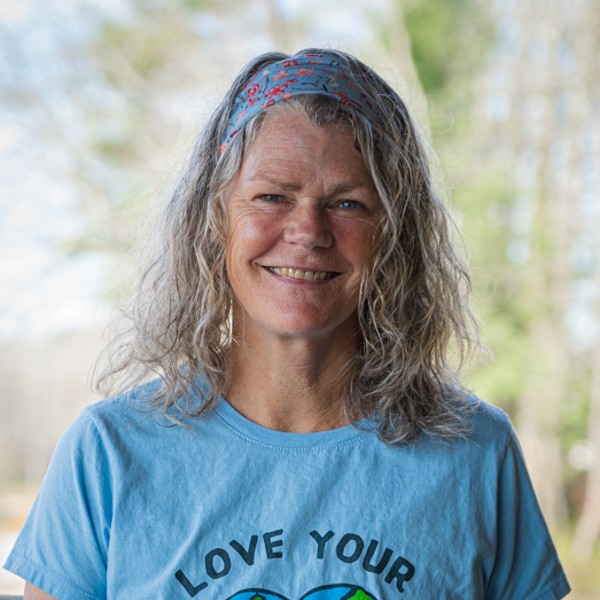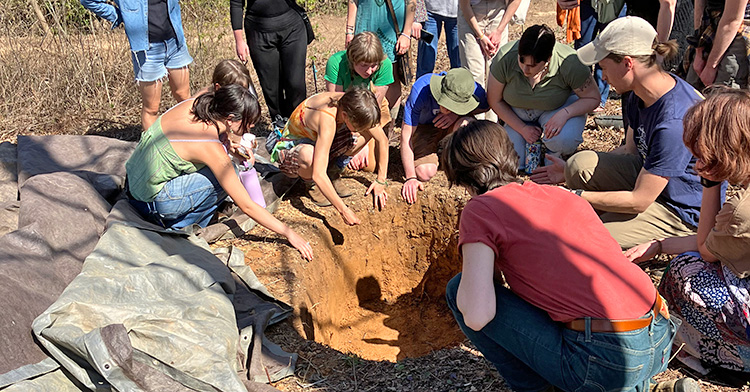10 minute read. A 20-minute version of this interview with additional details of interest to pastors also is available.
Katharine Hayhoe could tell some scary stories about climate change. Really, really scary stories. But she doesn’t.
Rather than leaning into fear, Hayhoe, an atmospheric scientist whose work focuses on the impacts of climate change, prefers leaning into love.
“What does fear do? It paralyzes us,” she said. But instead of being paralyzed into inaction by fear, we have another choice. “God has given us a spirit of being able to act out of love,” said Hayhoe, who is an evangelical Christian. “Fear often focuses on me; love focuses on others.”
What does love have to do with climate change? Linking the effects of climate change to the things that people love helps them understand that the issue isn’t just scientific or abstract or happening in the future. It’s happening now, and it could affect their friends, their family — even their ski vacations.
Connecting the impact of climate change to people’s lives will help move to action the 65% of people who already are worried about climate change, Hayhoe said.
“How’s it affecting the people, places, things I love? Why does it matter to who I am as a parent and the place where I live as a person of faith?” she said.
Hayhoe is a Paul Whitfield Horn Distinguished Professor and the Political Science Endowed Chair in Public Policy and Public Law at Texas Tech University. She also serves as chief scientist at The Nature Conservancy.
She grew up in Canada the daughter of missionaries and spent part of her childhood in Cali, Colombia. She is married to bestselling author Andrew Farley, who is lead pastor of The Grace Church in Lubbock, Texas, and with whom she co-wrote “A Climate for Change: Global Warming Facts for Faith-Based Decisions.” One of her latest books is “Saving Us: A Climate Scientist’s Case for Hope and Healing in a Divided World.”
Hayhoe has received numerous awards and recognitions and spends much of her time educating people about climate change. She writes and produces a digital short series on PBS, gives talks around the country (her TED talk has more than 4 million views) and is active on social media. She also produces a newsletter with positive news and actions to take on climate change.
She earned master’s and Ph.D. degrees in atmospheric science from the University of Illinois at Urbana-Champaign and has produced more than 125 peer-reviewed papers, abstracts and other publications.
Hayhoe spoke to Faith & Leadership’s Sally Hicks about her work and offered suggestions for engaging with people about climate change. The following is an edited transcript.
Faith & Leadership: You say that the single most important thing to do about climate change is to talk about it, which surprised me — and I think might surprise others. Why is talking the most important thing?
Katharine Hayhoe: Of course, talking is not sufficient, but it is the necessary first step. Talking is the first step to humans ever doing anything together, but it’s so obvious we just skip right over it. We just take it for granted.
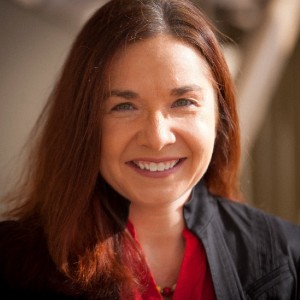
Often, when I say we [need to] talk about it, people immediately think of the dismissive [people] in their life, and they think, “Oh, now I’ve got all the tools. She wrote a book about it; she did a TED talk about it — I can convince Uncle Joe.” No. My answer to that is, “Don’t bother.”
We often think, “There’s a huge group of all the Uncle Joes of the world who are not worried and don’t care, so what I have to do is argue with them and scare the pants off them to get them to be worried.”
But what the survey data shows us is there’s a giant group of people who are worried but are not active. Is the goal to move the 20% who say they’re not worried to worried? Or is the goal to move the almost 60% who are worried but not activated into the activated category? In my opinion, the answer is B.
The conversations I recommend are conversations that take everything we know in our heads about how bad it is and how much worse it’s getting, and even how scary it truly is, and then connect our heads to our hearts.
Then we have to help people connect their hearts to their hands: What can I do to make a difference? How do I connect my head to my heart to my hands to actually start to see a difference around me?
There’s this intimate connection between hope and action. Often, we have to start with action before we see the hope. We have to go out and hunt it down through relentlessly engaging in action and encouraging others to engage in action, and then looking at what we’ve accomplished and what others have accomplished, and then sharing that with others.
That is really the positive feedback cycle that leads to hope. And it all begins with having that conversation.
F&L: How do you help people navigate that feeling that it doesn’t matter what I do?
KH: That is the dominant feeling that the largest number of people currently have in the United States and Canada (where I’m from) and across much of Europe and other high-income countries. In the U.S., two-thirds of people are worried, and in Canada, the number’s higher. In Europe, the number’s even higher. That’s almost 60% of the countries worried but not activated.
At minimum, two-thirds are worried in the U.S., yet 50% feel helpless and hopeless and don’t know where to start. And only 8% are activated.
When you ask people why they’re not doing more, their answers are, No. 1, “I don’t know what to do,” and No. 2, “Nobody’s ever asked me.”
F&L: I’ve got to be honest, even when reading your book “Saving Us,” I had a couple of moments when I was like, “Oh, I feel the despair. I feel the sinking in my heart.”
KH: Oh, yes. Exactly. It’s hard, even as a climate scientist, to get past that.
But what I have learned from the social science is that fear serves a role to wake us up. Fear also serves a role to give us that short-term adrenaline kick that we need to get away from the bear, so to speak.
But fear is the absolute worst at motivating long-term change. It enhances our feeling of helplessness, and it pushes us further into inaction.
What the social science tells us is that showing people what actions look like — that is what motivates people to act and people to care.
F&L: You’ve written, “The reason I’m a climate scientist is because I’m a Christian.” How did being a Christian make you become a climate scientist, especially when people may think of faith and science as being in conflict?
KH: I was very influenced by growing up in a home where my dad was both a teacher in a local church and a science teacher. The Bible tells us that God created this incredible universe that we live in. So what is studying the universe other than studying what God was thinking about when he set this whole thing up in the first place?
I was planning to be an astrophysicist. I had almost finished my undergraduate degree. I looked around, and there was this brand-new class on climate change. I thought, “Well, that looks interesting. Why not take it now?”
I took this class, and I was really surprised to learn, first of all, that climate science was the same physics I’d been learning in my physics and astronomy classes.
I was also surprised to learn how urgent it was, because I still thought of it as a future issue.
The third thing I learned — and this is what changed the trajectory of my entire career — is that climate change is an environmental issue, but it is not only an environmental issue. Climate change is also a poverty issue, a hunger issue, a water issue, a disease issue; it’s an economic issue; it’s a geopolitical issue; it’s a national security issue.
It’s taking all these inequalities that we already have — that so much of our Christian missions are dedicated to trying to address — and it’s actually making them worse.
Since the 1960s, the economic gap between the richest and poorest countries in the world has grown by as much as 25% thanks to climate change. If we think of all the work and all the effort and all the missions and all the organizations and everything that Christians have done to try to narrow that gap, well guess what? Climate change is pushing that apart even farther.
I could make a difference in people’s lives who are suffering today, as well as prevent measurable, quantifiable amounts of suffering in the future. I care about that because I’m a human, and I care about that because I’m a Christian. Jesus told his disciples in the book of John [13:35] that we are to be recognized by our love for others.
And what is climate change other than a failure to love? To love our sisters and our brothers and to love God’s creation? It says in Genesis 1[:28] that God gave humans responsibility over every living thing on this planet.
Because of what it says in the Bible, not because of what it says in the science, I realized that I as a Christian had to do everything I could to help with this urgent global issue.
F&L: We tend to think about climate change and climate action as folks falling into two camps: believers and deniers. How do those two camps talk to each other?
KH: I don’t like either of those labels. I don’t like the word “believer,” because I don’t “believe” in climate change. It is not a religion. The evidence, the data, is what tells us that the planet is warming.
We know it’s us. It doesn’t matter whether you believe it or not.
I don’t like the word “denier” either. All too often I’ve seen it applied to people who have questions. And frankly, in today’s environment, who wouldn’t have questions? It’s easier to find disinformation than it is to find correct information, sadly, especially if you go to certain Christian websites.
F&L: Is there better language to use?
KH: I prefer the spectrum developed by the Yale Program on Climate Change Communication. They have segmented people in America, and in fact people around the world, into six different groups.
At one end, you have people who are alarmed. Alarmed are currently 28% of the American population, and the next group is concerned. Concerned are 29%. That’s 57% of people who are alarmed or concerned.
Then you have 15% who are cautious, then 6% who are disengaged.
At the far end, we have two groups that haven’t moved much in the last 10 years. We have 11% who are doubtful and 11% who are dismissive.
Now, [dismissive] is only 11%, but they’re a very loud 11%. I run into them on social media every day. They’re in the comment section of every article online. They’re posting on Facebook all the time.
If someone’s dismissive, my best recommendation is to say, “I’m sorry, you’re wrong. And now let’s talk about something else.” If they’re your relative — and so often they are — I would say, “I love you. I’m sorry, you’re wrong. Now let’s talk about something else.”
F&L: How are you hopeful, given that the facts are fairly distressing?
Climate change is also a poverty issue, a hunger issue, a water issue, a disease issue; it’s an economic issue; it’s a geopolitical issue; it’s a national security issue.
KH: I practice hope. In Romans [5:3-4], Paul talks about hope, and he begins with suffering. He says that suffering leads to perseverance and perseverance to character and character to hope.
If you wait for hope, it will not find you. So where do we find hope? We have to go out; we have to find it. We have to hunt it down. We have to practice it. We have to dwell on it.
[The Bible] talks, in Philippians [4:8-9], about how we can practice what our mind dwells on — whatever things are pure, whatever things are lovely, whatever — it talks about actually training your mind to think on the things that are hopeful, that are full of love, that will lead to positive outcomes.
I’m not talking about wishful thinking; I’m just talking about recognizing that change is possible. Then you have to go and make it happen.
But you’re much more equipped to go out and make it happen if you realize that it is already being done in other places, that you can make a difference, that people can make a difference, and that a positive outcome is possible if we do everything we can to make that happen.
As part of my practice, I look up good news stories. I subscribe to channels on social media and news sources that are positive, that share good news.
F&L: Do you have any particular advice for pastors?
KH: My husband is a pastor, so I can speak very personally to this. We haven’t touched yet on an issue that might be at the forefront of many pastors’ minds when they see an article about this topic. And that is the fact that for over 15 years now, climate change has been right at the top of the most politically polarized issues in the U.S.
The No. 1 predictor of whether someone agrees that climate is changing, humans are responsible, the impacts are serious, is not how educated they are, is not how smart they are, is not how much science they know; it’s simply where they fall on the political spectrum. In the United States, white evangelical Protestants and white Catholics are neck and neck at the bottom of the people who are least concerned about climate change.
But when you dig into those statistics with demographic analysis, it turns out that it’s not where people go to church that determines their perspective on climate change; it’s how they vote. It’s where they fall on the political spectrum.
More than ever, I think, it’s essential to be grounded in what the Scriptures actually say, what our theology really teaches us, what it really means to be recognized by our love for others. Today, more than ever, we need that understanding and we need that message. And I believe that if we have that right, everything flows from it.
If you wait for hope, it will not find you. So where do we find hope? We have to go out; we have to find it. We have to hunt it down. We have to practice it. We have to dwell on it.

